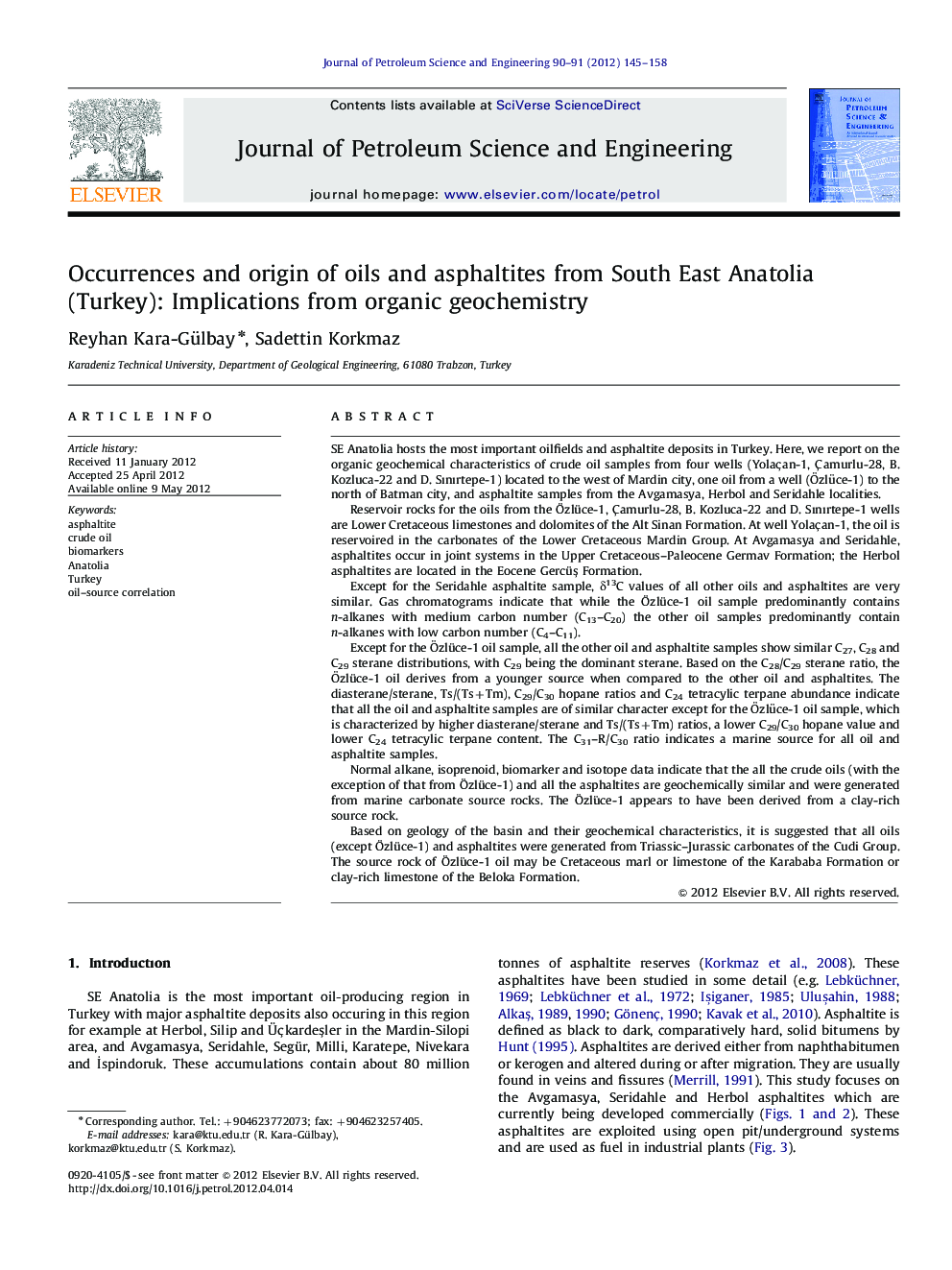| کد مقاله | کد نشریه | سال انتشار | مقاله انگلیسی | نسخه تمام متن |
|---|---|---|---|---|
| 1755445 | 1522846 | 2012 | 14 صفحه PDF | دانلود رایگان |

SE Anatolia hosts the most important oilfields and asphaltite deposits in Turkey. Here, we report on the organic geochemical characteristics of crude oil samples from four wells (Yolaçan-1, Çamurlu-28, B. Kozluca-22 and D. Sınırtepe-1) located to the west of Mardin city, one oil from a well (Özlüce-1) to the north of Batman city, and asphaltite samples from the Avgamasya, Herbol and Seridahle localities.Reservoir rocks for the oils from the Özlüce-1, Çamurlu-28, B. Kozluca-22 and D. Sınırtepe-1 wells are Lower Cretaceous limestones and dolomites of the Alt Sinan Formation. At well Yolaçan-1, the oil is reservoired in the carbonates of the Lower Cretaceous Mardin Group. At Avgamasya and Seridahle, asphaltites occur in joint systems in the Upper Cretaceous–Paleocene Germav Formation; the Herbol asphaltites are located in the Eocene Gercüş Formation.Except for the Seridahle asphaltite sample, δ13C values of all other oils and asphaltites are very similar. Gas chromatograms indicate that while the Özlüce-1 oil sample predominantly contains n-alkanes with medium carbon number (C13–C20) the other oil samples predominantly contain n-alkanes with low carbon number (C4–C11).Except for the Özlüce-1 oil sample, all the other oil and asphaltite samples show similar C27, C28 and C29 sterane distributions, with C29 being the dominant sterane. Based on the C28/C29 sterane ratio, the Özlüce-1 oil derives from a younger source when compared to the other oil and asphaltites. The diasterane/sterane, Ts/(Ts+Tm), C29/C30 hopane ratios and C24 tetracylic terpane abundance indicate that all the oil and asphaltite samples are of similar character except for the Özlüce-1 oil sample, which is characterized by higher diasterane/sterane and Ts/(Ts+Tm) ratios, a lower C29/C30 hopane value and lower C24 tetracylic terpane content. The C31–R/C30 ratio indicates a marine source for all oil and asphaltite samples.Normal alkane, isoprenoid, biomarker and isotope data indicate that the all the crude oils (with the exception of that from Özlüce-1) and all the asphaltites are geochemically similar and were generated from marine carbonate source rocks. The Özlüce-1 appears to have been derived from a clay-rich source rock.Based on geology of the basin and their geochemical characteristics, it is suggested that all oils (except Özlüce-1) and asphaltites were generated from Triassic–Jurassic carbonates of the Cudi Group. The source rock of Özlüce-1 oil may be Cretaceous marl or limestone of the Karababa Formation or clay-rich limestone of the Beloka Formation.
► SE Anatolia is the most important oil-producing region in Turkey.
► Major asphaltite deposits also occur in this region.
► The purpose of this study is to evaluate the geochemical characteristics of the oils and asphaltites.
► Asphaltite–asphaltite, asphaltite–oil and oil–oil correlations were also investigated.
► The relations among origins of these deposits were determined.
Journal: Journal of Petroleum Science and Engineering - Volumes 90–91, July 2012, Pages 145–158